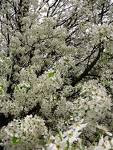The grapefruit’s history is tied to that of the Shaddock or pomelo and it was first referred to as “the forbidden fruit” of Barbados by Griffith Hughes in 1750. Later Patrick Browne reported it in much the same way as growing in Jamaica; writing of it as “the smaller shaddock” in 1814. In the same year, John Lunan described it in this way in his “Hortus Jamaicensis” (Plants of Jamaica) "a variety of shaddock, but the fruit is smaller, having thin, tough, smooth, pale yellow rind." It is thought that it got the name grapefruit because of the way it grows, hanging in clusters like grapes from the tree. It is believed that it was a natural cross between an orange and a pomelo.
 Grapefruits come in three colours, yellow or blond, pink and red, the colours describing the flesh and not the rind. The best in terms of medicinal value for prevention of prostate health for men is the red grapefruit which contains lycopene which has been hailed as a natural Viagra. It seems to help men who have erectile dysfunction as well as maintaining the health of the prostate gland. Lycopene is also found in watermelons, apricots, tomatoes, papaya and guava. For men any of these fruit eaten every day will be beneficial especially if they drink green tea too. Grapefruit of all descriptions contain a lot of vitamins C, E and A as well as B-complex ones and minerals such as calcium, copper, iron, magnesium, manganese, potassium, phosphorous, selenium and zinc. They also contain some Omega -3 and -6 fatty acids and 16 amino acids. They have potent antioxidant properties and are good to ward off and help cure colds and flu as well as having anti-inflammatory properties so good for osteoarthritis, rheumatoid arthritis and asthma. They are cardiovascular protective and protect against strokes and cancers too. Grapefruit also contains the phytonutrients, limonoids as do citrons and lemons which are believed to inhibit the growth of tumours. In vitro they have killed cancer cells of the lungs, colon, breast, prostate, skin, stomach and mouth. The pulp of citrus fruit including grapefruits contains glucarates, compounds which may help to prevent breast cancer. The bioflavonoid naringen in grapefruit repairs damaged DNA in human prostate cancer cells, so men really should add grapefruit to their diets.
Grapefruits come in three colours, yellow or blond, pink and red, the colours describing the flesh and not the rind. The best in terms of medicinal value for prevention of prostate health for men is the red grapefruit which contains lycopene which has been hailed as a natural Viagra. It seems to help men who have erectile dysfunction as well as maintaining the health of the prostate gland. Lycopene is also found in watermelons, apricots, tomatoes, papaya and guava. For men any of these fruit eaten every day will be beneficial especially if they drink green tea too. Grapefruit of all descriptions contain a lot of vitamins C, E and A as well as B-complex ones and minerals such as calcium, copper, iron, magnesium, manganese, potassium, phosphorous, selenium and zinc. They also contain some Omega -3 and -6 fatty acids and 16 amino acids. They have potent antioxidant properties and are good to ward off and help cure colds and flu as well as having anti-inflammatory properties so good for osteoarthritis, rheumatoid arthritis and asthma. They are cardiovascular protective and protect against strokes and cancers too. Grapefruit also contains the phytonutrients, limonoids as do citrons and lemons which are believed to inhibit the growth of tumours. In vitro they have killed cancer cells of the lungs, colon, breast, prostate, skin, stomach and mouth. The pulp of citrus fruit including grapefruits contains glucarates, compounds which may help to prevent breast cancer. The bioflavonoid naringen in grapefruit repairs damaged DNA in human prostate cancer cells, so men really should add grapefruit to their diets. In Pakistan and India the pulp is believed to prevent and cure dysentery, diarrhoea enteritis, typhus and other digestive tract disorders, and a glass of equal parts of lemon juice and grapefruit juice banishes fatigue after a day’s work. Grapefruit juice is also an effective diuretic, and may also help eczema sufferers when it is drunk. Grapefruit also lowers cholesterol levels.
In Pakistan and India the pulp is believed to prevent and cure dysentery, diarrhoea enteritis, typhus and other digestive tract disorders, and a glass of equal parts of lemon juice and grapefruit juice banishes fatigue after a day’s work. Grapefruit juice is also an effective diuretic, and may also help eczema sufferers when it is drunk. Grapefruit also lowers cholesterol levels. Grapefruit stimulate the appetite so are good for appetizers; try segments of grapefruit on a bed of Cos/Romaine lettuce with prawns and avocados and a simple lemon dressing.
If you like Margaritas try this one with grapefruit instead of lemon juice.
Ingredients
grapefruit segments cut into quarters
salt
¾ cup of grapefruit juice
6 oz tequila
2 oz Cointreau or Triple Sec
2 cups cracked ice
Method
Rub the cut grapefruit segments around the rim of cocktail glasses then swirl them in a mound of salt to coat the rims.
Blend the liquids until smooth.
Pour into cocktail glasses and garnish with a grapefruit quarter on each rim.
This has Taste and is a Treat.


















